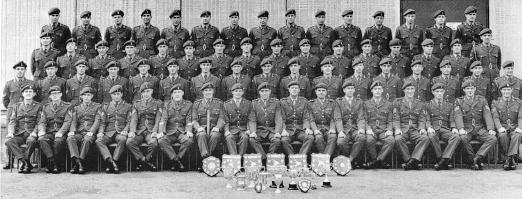
Plate 33. 216 Parachute Signal Squadron September 1968.
Click to enlarge the picture.
Detachment Deployments 1964-1967
On return to Farnborough from Cyprus the Squadron reformed itself quickly and settled to the familiar routine of exercises and other training. A detachment including one officer was still deployed in Bahrain and served in the Radfan area of Aden on a rotational basis.
In January 1965, two detachments were deployed on an operational tour to Borneo with 2nd Battalion The Parachute Regiment. Also in January, 16th Parachute Brigade Group dropped the word 'Group' from its title. This change in the Brigade's title did not immediately affect the unit's title.
On 1 February 1965, the Squadron left Elles Barracks, Farnborough and moved to the new barracks which had been constructed to replace the old Stanhope Lines. Construction of the new barracks had started in October 1962. An inscription on the wall of the small garden between Arnhem, Bruneval, Rhine and Normandy Barracks bears witness to this and reads, 'This stone unveiled by Mr James Ramsden MP Parliamentary Under Secretary of State for War on 4 October 1962 commemorates the start of the rebuilding of the Barracks in Aldershot'. The Squadron moved into Arnhem Barracks, Montgomery Lines. A parade was held on 7 April to mark the naming of the new barracks which had been built at a cost of £3m., Field Marshal Viscount Montgomery of Alamein took the salute and the Squadron provided a contingent of 63 men, taking precedence on the right of the parade.
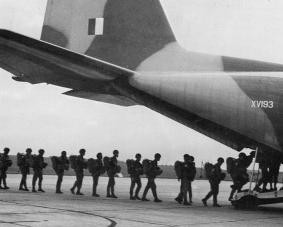
Plate 34. Emplaning for the first C130 jump 1967.
Click to enlarge the picture.
Also on 1 February, 16th Parachute Brigade was placed under command of 3rd Division. In the absence of one of the Division's brigades on operations in the Far East, the Squadron took on the responsibility for its battalion rear link detachments.
Major M U Ryan took over command of the Squadron from Major Dennis on 12 July 1965. Major Dennis on his departure from the Squadron, presented a pewter tankard, known as the Dennis Trophy, which has been awarded to the best soldier each year since 1965. (see Appendix 6). Major Ryan, shortly after he had taken over command, sought permission to change the Squadron's title to bring it into line with other minor units in the Brigade. Permission was given and the title 216 Signal Squadron (Parachute Brigade Group) was changed to 216 Parachute Signal Squadron.
On 18 October 1965 one officer and seven men deployed on an operational tour to British Guiana attached to 3rd Battalion The Parachute Regiment.

Plate 35. 216 Parachute Signal Squadron January 1971.
Click to enlarge the picture.
During 1965/66 the Squadron was reduced in strength following various manpower cuts. This resulted in some long serving members of the unit either leaving the Army or being posted. The structure of the Squadron changed slightly during this period and now consisted of a Communications Troop, a Radio Troop, a Support Troop and overseas detachments such as Bahrain and British Guiana.
Colonel Ryan, who at the time commanded the unit, recalls that during the period 1965-1967 approximately 75% of the Squadron were deployed for various periods with one of the Battalions either in Bahrain, Aden, Borneo or British Guiana. This policy achieved the maximum number of men gaining operational experience. Colonel Ryan also recalls that during this period the Squadron was able to achieve its full establishment for the first time in 10 years because volunteers could be drawn from training units as well as field units.
Aldershot 1967 - 1971
Apri1 1967 was the first time that the Squadron had been together for some four years to warrant a full unit photograph. The hectic life in Aldershot continued unabated. HM The Queen and HRH The Duke of Edinburgh reviewed the whole of 16th Parachute Brigade in Aldershot on 24 Apri1 1967 . The Brigade mounted a mass drop of 540 men including many from the Squadron.
Major C N Last succeeded Major Ryan on 23 June 1967 and was himself succeeded by Major H R Williams on 6 September 1968.By August 1969 trouble in Northern Ireland reached a crisis and on 14 August troops were called in to assist the Civil Powers. A detachment from the Squadron was recalled from Summer block leave although, in the event, was not actually deployed to the Province.
In January 1971 various elements of the Brigade assisted 2nd Battalion The Parachute Regiment in providing guards on public duties in London. The Squadron provided four complete guards at the Bank of England. Each guard consisted of one Officer, one Sergeant, one Corporal, one Lance Corporal and eight Signalmen.
Northern Ireland 1971
On 8 February 1971, 16th Parachute Brigade HQ was ordered to deploy to Northern Ireland. The Squadron advance party moved on 9 February and the main body moved during the next two days. The move was via Liverpool and the Belfast Ferry and the Squadron, with Brigade HQ, took up residence in the empty Pinehurst Factory in Lurgan.
The Squadron provided communications for the Brigade throughout its area of responsibility which covered the whole of the Province less Belfast and Londonderry . Communications involved Pye Westminster commercial pattern radio and Larkspur military radio nets.
Operators quickly settled to 24 hour shift working. Radio and rebroadcast site recces were completed and on occasions the Squadron provided various patrols. A number of men were attached to 1st Guards Independent Parachute Company at Newry and gained experience in searching and riot control. Communications eventually involved a rebroadcast chain of stations from Londonderry to Rostrevor with A41 sets working between stations.
Life in Ulster did from time to time have its lighter moments. On 16 May a race between two teams each of 12 men from the Squadron was held. The course started and finished outside the swimming pool in Lurgan and followed an anti-clockwise route around Lough Neagh, a total distance of 72½ miles. One team was made up from officers and SNCOs and the other team from corporals and below. The total distance was achieved as a relay, each man running 5-6 miles. The Corporals team won.
The short tour in Ireland came to an end in June. On 28 May the unit advance party returned to Aldershot bringing with it a C11 SSB detachment. This C11 detachment established communications with Lurgan and handled traffic dealing with the return of the Headquarters and the Signal Squadron. Between 4 - 5 June 1971, the Squadron handed over to 19th Airportable Brigade HQ and Signal Squadron and returned to Arnhem Barracks. The return journey to England involved staging through Palace Barracks, Hollywood and crossing to Liverpool aboard the 'Ulster Prince'. A week's leave was granted on return.
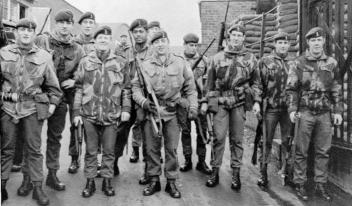
Plate 36. A patrol about to leave the factory May 1971.
Click to enlarge the picture.
Aldershot 1971 - 1977
Major J R Roberts took over command of the Squadron from Major Williams in September 1971. After returning from Northern Ireland, the Squadron settled back into the Aldershot peacetime routine. That routine, however, was this time broken by the explosion of an IRA car bomb adjacent to the HQ Officers' Mess. The explosion occurred on 22 February 1972 and killed seven people and damaged the building beyond repair. Lieutenant Gittings and Second Lieutenant Harris were slightly injured and the whole Squadron was very much involved in the rescue and clearing operation that followed. A memorial service was held at 1200 hours on 24 March in the Royal Garrison Church.
The Squadron again provided the Bank of England Picquet on the 23 and 26 February and on the 1, 4 and 7 March 1973.
On 29 June 1973 a dinner and dance was held in Aldershot to celebrate the 25th anniversary of the forming of the Squadron in June 1948 on the reduction of 6th Airborne Divisional Signal Regiment to an Independent Brigade Signal Squadron.
The organisation of the Squadron in 1973 is illustrated at Figure 5 in Appendix 2. It was this organisation, in essence, which was to continue until the demise of the unit in 1977.
In September 1974 Major J V Fielding took over command of the Squadron from Major Roberts. Throughout 1976 the Squadron began to prepare for its change of role and organisation resulting from the Army Restructuring Plan 1975. The full Squadron parachute role ended in March 1976.
Although the Squadron had been in Arnhem Barracks since 1965, it shared the facilities with 1st Parachute Logistic Regiment. As part of the restructuring plan, the Logistic Regiment disbanded on 10 December 1976 and the Squadron took over the remainder of Arnhem Barracks in preparation for its increase in size.
In July 1976 Major C D A Blessington took over command of the Squadron from Major Fielding, some eight months before the Squadron in its present form came to an end.
It should not be forgotten that during the period between the Squadron's return from Northern Ireland in 1971 to April 1977 when it changed role, the Unit continued to provide individual reinforcements for Cyprus, Belize and Northern Ireland. Training was intense with numerous exercises both at home and abroad. Parachuting, recruiting, sport, visits and demonstrations all added up to an extremely busy period in the Squadron's life.
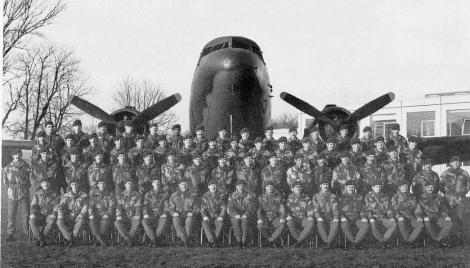
Plate 37. 216 Parachute Signal Squadron. December 1975
Click to enlarge the picture.(157k)
216 Parachute Signal Squadron marched onto Red Square, Arnhem Barracks at 0830 hrs 1 April 1977 for the last time. Major Blessington addressed the Squadron at this farewell parade and the Squadron marched off parade under SSM Baikie. Half an hour later a new unit '6th Field Force HQ and Signal Squadron' marched back onto the same square, this time under its new RSM WO1 (RSM) T R Gainford. Brigadier M S Gray OBE, the Commander of 6th Field Force, addressed the second parade and so 6th Field Force HQ and Signal Squadron came into being.
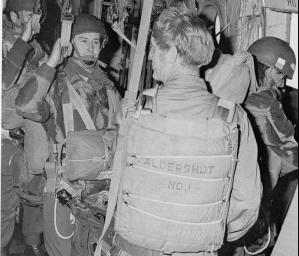
Plate 38. The last full Squadron Jump March 1976
Click to enlarge the picture.(149k)